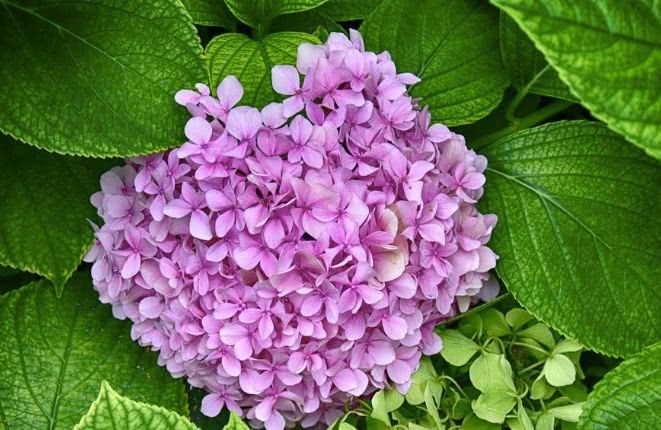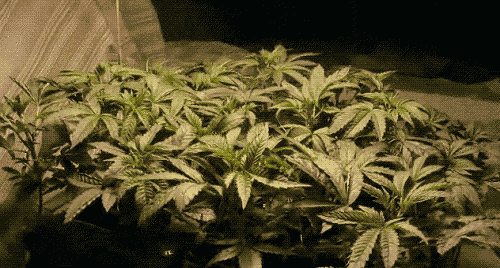Master these points. Hydrangea burst into pots.

The shape of the hydrangea flower is surrounded by countless four-petal flowers into an umbrella, also like a ball, the red hydrangea is quite like a hydrangea, hence the name. Many flower friends will keep one or two pots at home. After all, they can enjoy the huge hydrangea at home. It is beautiful to think about it. Some flower friends have raised hydrangea in their homes for 10 years and have been blooming continuously, but there are still some flower friends whose hydrangeas do not bloom. How should they be raised in the end?
1. Soil
The planting soil of hydrangea should be loose, fertile and well-drained sandy loam. However, the flower color is affected by soil acidity and alkalinity, acidic soil flowers are blue and alkaline soil flowers are red.
2. Lighting
Hydrangea belongs to short sunshine flowers, like semi-shady environment, more shady, but also to give sufficient light, daily light time to ensure 3, 4 hours on the line, winter should give hydrangea sufficient light, spring and autumn to avoid strong light, summer should be shaded.
3. Temperature
Generally, the growth temperature of hydrangea is 18-28 ℃, the winter temperature is not lower than 5 ℃, and the temperature of 20 ℃ can promote flowering and growth, so we also need to meet the temperature requirements, which can be beneficial to the growth of hydrangea.
4. Watering
Hydrangea has hypertrophic leaves, luxuriant branches and leaves, and needs more water. In the spring, summer and autumn of the growing season, it is necessary to irrigate enough water to keep the basin soil moist. The summer weather is hot, evaporation is large, in addition to watering enough water, but also spray water to the leaves every day. Hydrangea root is fleshy root, watering can not be excessive, avoid stagnant water in the basin, otherwise it will rot root.
5. Fertilization
Generally, in the vigorous growth stage of hydrangea, we need to give hydrangea sufficient nutrients, and we can apply rotten thin cake fertilizer every half a month, so that it can promote the growth of hydrangea and make the flowers of hydrangea bigger. It's good for growth. Don't fertilize during the dormant period and let the hydrangea get enough rest.
6. Pruning
Most varieties of hydrangea are flowered from old branches, and if they are not pruned properly, it will affect the flowering of the following year. Usually hydrangea is pruned after flowering, and the residual flowers are cut off in time after flowering, leaving 3-4 buds on the ground for each branch, and other branches are cut off. Pruning should be carried out at the end of August at the latest, otherwise it will seriously affect the flowering of the second year.
7. Change the basin soil
Pot hydrangea, generally every year to turn the pot to change the soil, turn the basin to change the soil in early March is appropriate. When changing pots, it is necessary to prune the roots of the plant, cutting off rotten roots, rotten roots and overlong roots. After the plant is moved into the new pot, the soil should be compacted, watered and placed in a shaded place for about 10 days, and then moved outside for normal management.
- Prev

In September and October, a fig seedling was planted in a pot for 6 months. The fruit was full of branches and could not be eaten.
Now there are not only more and more people planting potted flowers, but also a lot of potted fruit trees in their own yard or balcony. After all, this potted fruit tree and potted flowers are about the same, as long as they manage water, fertilizer, light and ventilation.
- Next

These flowers can grow a garden without buying a leaf.
"green pineapple" can hang in the study, can also be hydroponically placed indoors to watch, it is known as the "flower of life", vitality is very tenacious to live in the face of water. It is very easy to raise green pineapple, just cut a twig with scissors. Put it in a water bottle.
Related
- Wuhan Hospital Iron Tree Blooming Result Was Instantly Frightened by the Gardener Master
- Which variety of camellia is the most fragrant and best? Which one do you like best?
- What is the small blue coat, the breeding methods and matters needing attention of the succulent plant
- Dormancy time and maintenance management of succulent plants during dormancy
- Minas succulent how to raise, Minas succulent plant pictures
- What are the varieties of winter succulent plants
- How to raise succulent plants in twelve rolls? let's take a look at some experience of breeding twelve rolls.
- Attention should be paid to water control for succulent plants during dormant period (winter and summer)
- Watering experience of twelve rolls of succulent plants
- Techniques for fertilizing succulent plants. An article will let you know how to fertilize succulent plants.

